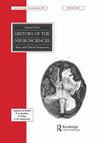从疑病症到疑病症。
IF 0.5
3区 哲学
Q3 HISTORY & PHILOSOPHY OF SCIENCE
引用次数: 0
摘要
本文章由计算机程序翻译,如有差异,请以英文原文为准。
From hypochondrium to hypochondria.
According to Galen of Pergamon (129–ca. 216), Greek physician Diocles of Carystus (ca 375 BCE–ca. 295 BCE) (Smith 1867, 1011), a pupil of Hippocrates of Kos (ca. 460 BCE–ca. 370 BCE), was the author of the first treatise of (animal) anatomy (Jouanna 1992, 435). But he is mostly credited with a very early description of a kind of gastritis that would be today considered a symptom of hypochondria (Wintrebert 2009, 44). Although retrospective medical diagnosis must always be taken warily, especially when the supposed disease is considered a psychological/psychiatric disorder, it seems that the concept—if not the term—of hypochondria dates back many centuries. Among celebrities of the early first millenium to have been recently diagnosed as probably suffering from hypochondria, one can mention Roman Stoic philosopher Seneca (ca. 4 BCE–65 CE), who has been described as a “malade imaginaire” (Courtil 2012) and even as the “greatest hypochondriac of the Antiquity” (Russell 1973, 80). Others include Roman Emperor Marcus Aurelius Antoninus (121–180; see Whitemore 1977), the Greek orator Publius Aelius Aristides Theodorus (117–181), and Byzantine Archbishop Theophylact of Ohrid (ca. 1050–ca. 1107; see Jouanno 2002).
求助全文
通过发布文献求助,成功后即可免费获取论文全文。
去求助
来源期刊

Journal of the History of the Neurosciences
社会科学-科学史与科学哲学
CiteScore
1.00
自引率
20.00%
发文量
55
审稿时长
>12 weeks
期刊介绍:
The Journal of the History of the Neurosciences is the leading communication platform dealing with the historical roots of the basic and applied neurosciences. Its domains cover historical perspectives and developments, including biographical studies, disorders, institutions, documents, and instrumentation in neurology, neurosurgery, neuropsychiatry, neuroanatomy, neurophysiology, neurochemistry, neuropsychology, and the behavioral neurosciences. The history of ideas, changes in society and medicine, and the connections with other disciplines (e.g., the arts, philosophy, psychology) are welcome. In addition to original, full-length papers, the journal welcomes informative short communications, letters to the editors, book reviews, and contributions to its NeuroWords and Neurognostics columns. All manuscripts are subject to initial appraisal by an Editor, and, if found suitable for further consideration, full- and short-length papers are subject to peer review (double blind, if requested) by at least 2 anonymous referees.
 求助内容:
求助内容: 应助结果提醒方式:
应助结果提醒方式:


